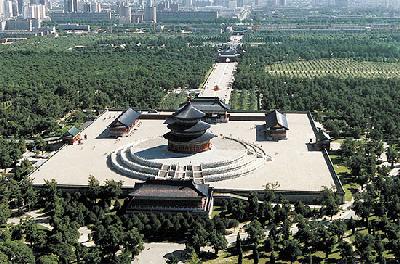 |
It is the place where emperors of the Ming and Qing dynasties (1368-1911) worshipped the heaven and was built in the 18th year (1420) of the reign of Ming Emperor Chengzu. As Chinese emperors called themselvesTianzi, or the son of heaven, they had to cede supremacy to the heaven in terms of abiding. The altar, in a plane round shape, called Huanqiu Tan (Circular Mound Altar), was rebuilt in the 17th year (1752) of Qing Emperor Gaozong. The Qinian Hall (Hall of Prayer for Good Harvests) was rebuilt in the 16th year (1890) of Emperor Dezong.
TheTempleofHeavenhas an area of 273 hectares, which is five times the size of theForbidden City, with a layout in two squares one inside the other. Two walls divide the ground into the outer and inner parts. The outer wall is 6,416 meters long and the inner wall is 3,292 meters long. The northern part of the outer and inner walls is a semicircle and the southern part of them is square, declining from north to south to symbolize the traditional belief that Heaven was high and round and the earth was low and rectangular.